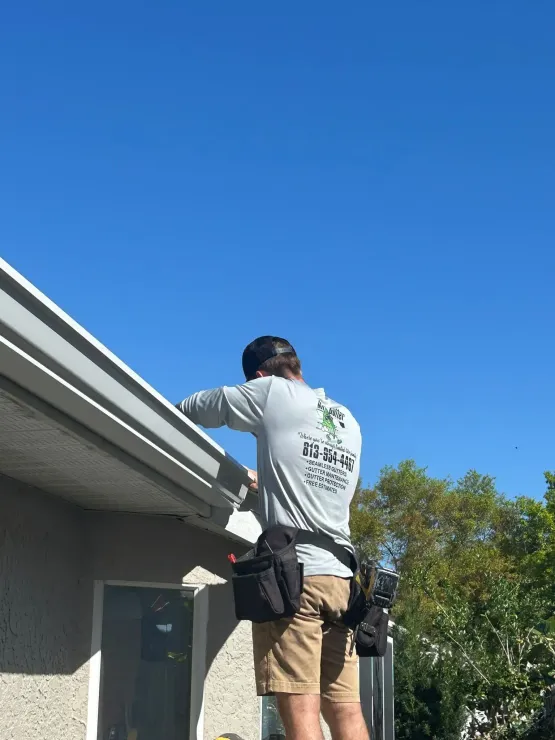Introduction
Water conservation has become an essential practice in our increasingly resource-conscious world. As homeowners look for ways to minimize water usage and maximize efficiency, rain barrels have emerged as a popular solution. These devices collect and store rainwater from rooftops for later use, making them an excellent addition to any eco-friendly home. However, not all rain barrels are created equal, especially when it comes to compatibility with downspouts. Understanding how to effectively harvest water using rain barrels is crucial for ensuring that your system functions optimally.
In this comprehensive article, we will dive deep into the nuances of rain barrel compatibility with downspouts. We’ll explore various aspects such as gutter systems, installation processes, maintenance requirements, and more. By the end of this guide, you’ll be equipped with the knowledge needed to set up an efficient rainwater harvesting system that complements your home’s design and functionality.
Rain Barrel Compatibility with Downspouts: Harvesting Water Effectively
Rain barrels can significantly reduce your water bill while providing a sustainable source of irrigation for your garden or landscape. To ensure that your rain barrel works efficiently, it must be compatible with your home's downspout system. A well-placed downspout directs the flow of rainwater into the barrel without causing overflow or leaks.
Understanding Your Downspout System
What Is a Downspout?
A downspout is a vertical pipe that carries rainwater from the gutter system directly to the ground or drainage area. Its primary function is seamless gutter installation to ensure proper water management around your home’s foundation.
Why Are Downspouts Important?
Downspouts play a vital role in preventing water pooling around your home’s foundation, which can lead to structural damage and costly repairs. Additionally, they facilitate the collection of rainwater for reuse when connected to a rain barrel.

Choosing the Right Rain Barrel
Types of Rain Barrels
Plastic Rain Barrels:- Lightweight and easy to install. Available in various colors and shapes.
- Aesthetic appeal but may require more maintenance.
- Durable but can be prone to rust.
- Some manufacturers offer customizable colors and designs.
Sizing Your Rain Barrel
Selecting the right size depends on various factors:
- The roof size contributing to your gutters. Average rainfall in your area. Intended use (e.g., watering plants vs. filling a swimming pool).
Gutter Installation Process Explained
Understanding how gutters are installed can help you determine how best to connect them to your rain barrel system.
The Gutter Installation Process
Planning: Measure roof edges and decide where gutters will be installed. Choosing Materials: Select from aluminum, vinyl, or steel based on durability and cost. Installation: Secure brackets at regular intervals before attaching gutter sections. Connecting Downspouts: Ensure proper angles for effective water flow towards the barrel.Signs You Need a Gutter Replacement
- Cracks or holes in existing gutters Rust spots on metal surfaces Sagging sections Overflowing during rains
How Long Does Gutter Installation Take?
Typically, gutter installation takes about one day for an average-sized home; however, larger properties may require additional time due to complexity.
Gutter Installation Costs Broken Down
| Item | Estimated Cost | |-----------------------------|------------------| | Materials (per foot) | $3 - $25 | | Labor (per hour) | $50 - $100 | | Additional Accessories | $20 - $300 |
DIY Gutter Installation vs Professional Install
Doing it yourself can save money but requires tools and skills that may not be accessible for everyone:
Pros of DIY:
- Lower costs Personal satisfaction
Cons of DIY:
- Time-consuming Potential for improper installation
Pros of Professional Install:
- Expertise ensures efficiency Warranty on workmanship
Cons of Professional Install:
- Higher upfront costs
What to Expect During Gutter Replacement?
During replacement:
Removal of old gutters. Inspection of fascia boards for damage. New gutter installation with proper alignment. Connection of new downspouts leading toward the rain barrel.Local Building Codes for Gutter Installation
Before installing gutters or connecting them to rain barrels, check local building codes regarding:
- Height restrictions Material regulations Permits required for installation
Installing Gutters on Metal Roofs
Installing gutters on metal roofs requires specific considerations as their slope affects drainage patterns:
Use continuous hangers instead of spikes. Ensure proper sealing at joints to prevent leaks.FAQs Related to Rain Barrel Compatibility with Downspouts
1. What size rain barrel do I need?
The size depends on your roof area and typical rainfall; common sizes range from 50 gallons to over 200 gallons.
2. Can I connect multiple downspouts to one rain barrel?
Yes! Using diverters allows multiple downspouts to feed into a single rain barrel effectively.
3. How often should I clean my rain barrel?
Clean it at least once a year or after significant storms; check regularly for debris build-up.
4. Will my local government offer rebates for installing a rain barrel?
Many municipalities encourage conservation efforts; check your local government website for potential rebates!
5. Do I need a permit before installing a rain barrel?
This varies by location; some areas require permits while others do not—always verify local regulations first!
6. How do I ensure my downspout directs water into my rain barrel?
Install a diverter that automatically channels water from the downspout into the barrel during rainfall events.
Conclusion
In conclusion, understanding Rain Barrel Compatibility with Downspouts is crucial not only for efficient water harvesting but also for protecting your home against potential water damage caused by improper drainage systems. By taking into account factors like gutter materials, installation processes, local building codes, and regular maintenance practices—including cleaning out gutters—you'll create an effective system that brings numerous benefits both environmentally and economically.
When planned correctly, integrating a well-designed gutter system coupled with an effective rainwater harvesting method transforms ordinary homes into eco-friendly havens capable of conserving precious resources while beautifying outdoor spaces! Whether you're looking at DIY options or opting for professional installations—stay informed so you make choices that fit best within your lifestyle!